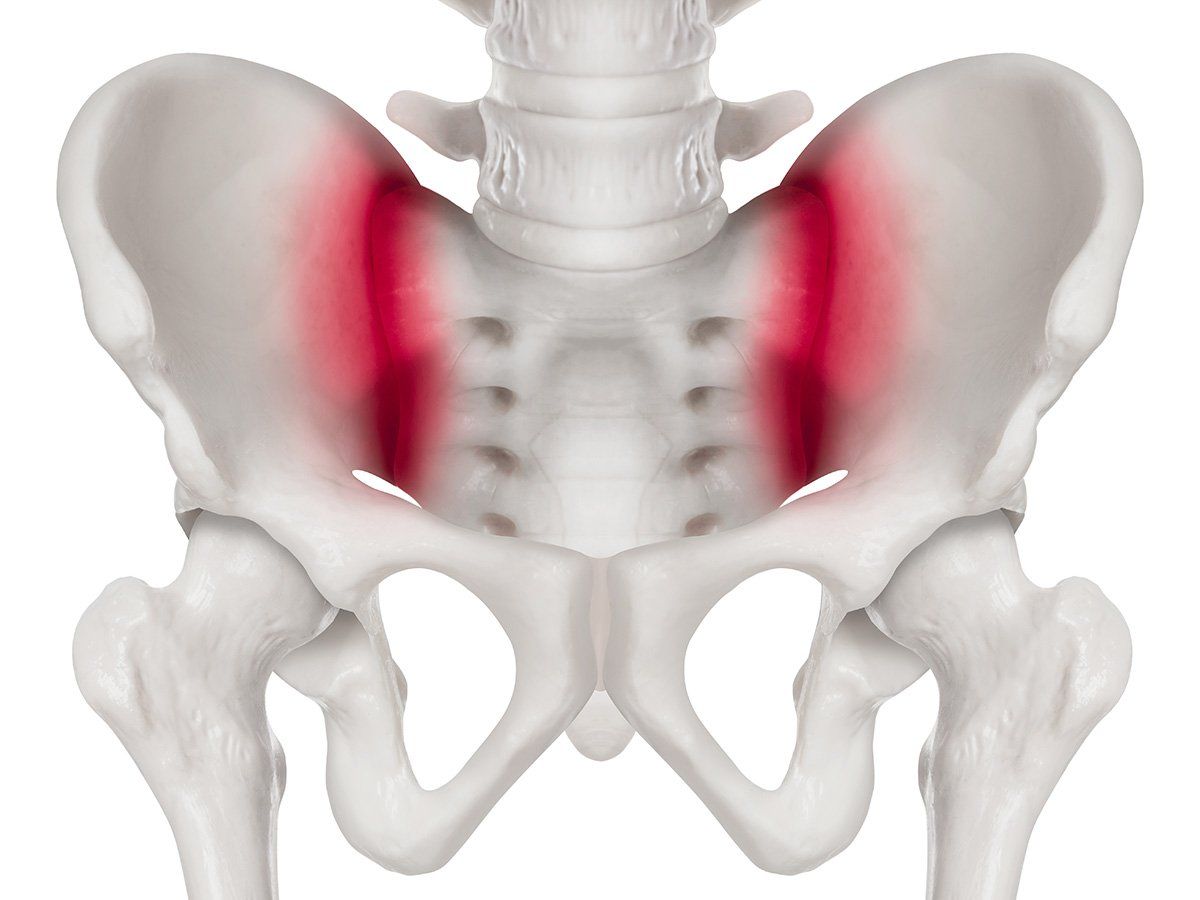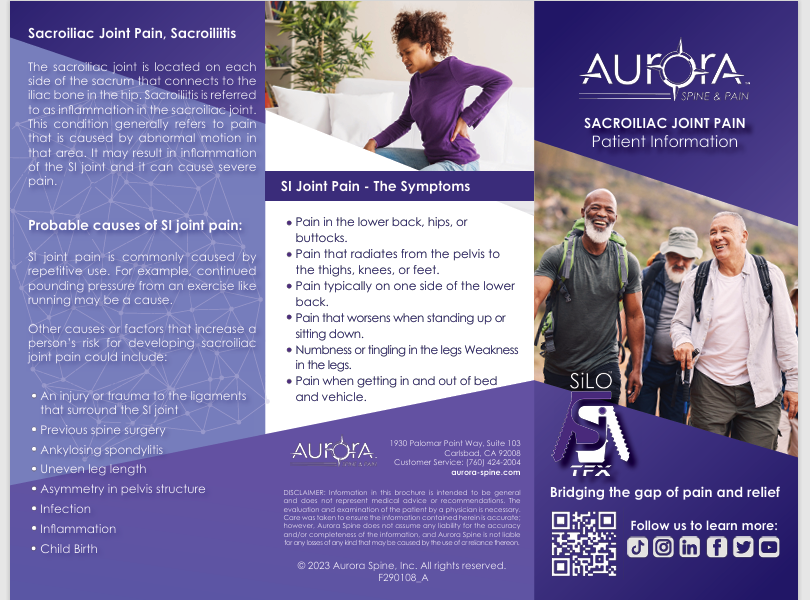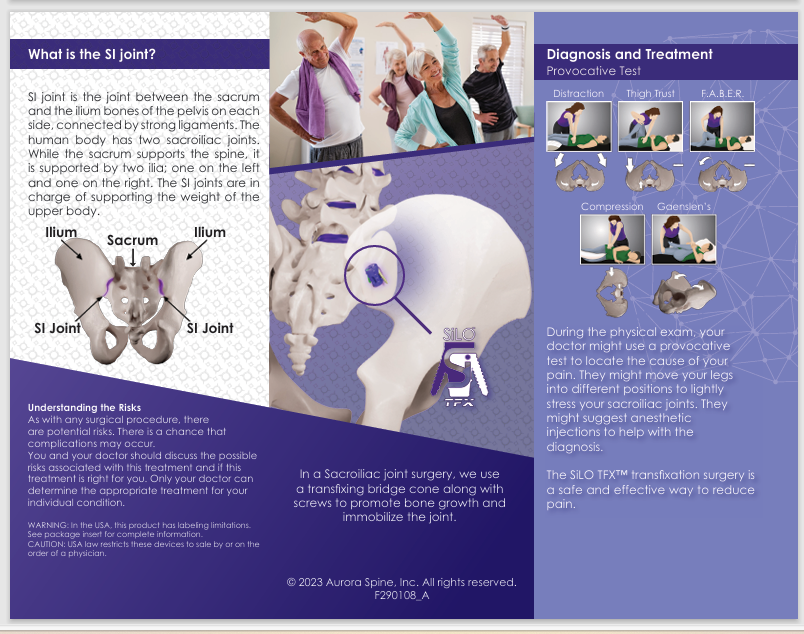SI Joint Pain
Symptoms of Si Joint Pain
For some, SI joint pain could be dull and achy, for others it can be sharp and stabbing. You’re most likely to feel SI joint pain in your lower back and buttocks, but it can move out to your hips and down to your thighs, groin, and even your feet. You may also experience:
- Pain only one side of your lower back, or both sides
- Pain with prolonged standing
- Pain that worsens with walking, running, or taking large strides
- Pain that worsens with certain movements, such as getting up from a chair, climbing stairs, or turning in bed
- Muscle tightness and tenderness in your hips or buttocks
If your SI joint pain is due to inflammatory back pain such as from ankylosing spondylitis, there are other distinct features, such as pain that has lasted more than three months, feels better with movement and worse with rest, and often wakes you up in the middle of the night

How its Treated
Step one: Stop doing things that hurt your SI joints. Modify or avoid activities that worsen your pain to help reduce inflammation in the joint. Alternating ice and heat might help ease sacroiliac joint pain. Other ways to help find relief:
Medications
Depending on the cause of your SI joint pain, your doctor may recommend:
- Pain relievers (over-the-counter or prescription, if needed)
- Anti-inflammatory meds (such as nonsteroidal anti-inflammatory drugs, or NSAIDs)
- Muscle relaxants (to help reduce muscle spasms)
- Biologics, such as tumor necrosis factor (TNF) inhibitors or others (to treat axial spondyloarthritis or ankylosing spondylitis)
Physical therapy
Your doctor or physical therapist can tailor a program for you that may include:
- Massage therapy to ease sore muscles and improve mobility in the joint, hip, and low back
- Range-of-motion and stretching exercises to maintain joint flexibility
- Strengthening exercises to help stabilize the joint and reduce the stress load
- Body mechanics to teach you to how to move and use your body in everyday activities to ease SI joint dysfunction and pain
Non-surgical procedures
If you’re still hurting after conservation therapies, your doctor might suggest:
- Steroid shots: Cortisone can be injected directly into the SI joint to reduce inflammation and pain. Because it’s deeper within the body than most joints, the steroid injections are usually given in a hospital setting, under live X-ray guidance. You can get only a few joint injections a year because the steroids can weaken your joint’s bones and tendons.
- Radiofrequency ablation: This procedure uses radio waves to destroy the nerve fibers that carry pain signals in the joint, therefore reducing pain.
Our Treatment
We use a minimally invasive procedure that uses allograft or titanium to join the two bones in the SI joint together so they fuse. This procedure typically takes 30 minutes to an hour with an interventional pain physician.


Or call us now at 405-503-1208

